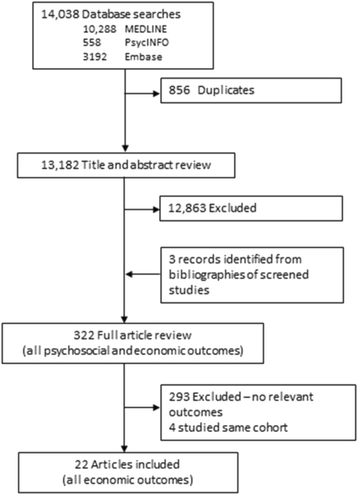The economic impact of epilepsy: a systematic review
- PMID: 26607561
- PMCID: PMC4660784
- DOI: 10.1186/s12883-015-0494-y
The economic impact of epilepsy: a systematic review
Abstract
Background: In this review we aimed to determine the economic impact of epilepsy and factors associated with costs to individuals and health systems.
Methods: A narrative systematic review of incidence and case series studies with prospective consecutive patient recruitment and economic outcomes published before July 2014 were retrieved from Medline, Embase and PsycInfo.
Results: Of 322 studies reviewed, 22 studies met the inclusion criteria and 14 were from high income country settings. The total costs associated with epilepsy varied significantly in relation to the duration and severity of the condition, response to treatment, and health care setting. Where assessed, 'out of pocket' costs and productivity losses were found to create substantial burden on households which may be offset by health insurance. However, populations covered ostensibly for the upfront costs of care can still bear a significant economic burden.
Conclusions: Epilepsy poses a substantial economic burden for health systems and individuals and their families. There is uncertainty over the degree to which private health insurance or social health insurance coverage provides adequate protection from the costs of epilepsy. Future research is required to examine the role of different models of care and insurance programs in protecting against economic hardship for this condition, particularly in low and middle income settings.
Figures
References
Publication types
MeSH terms
Substances
LinkOut - more resources
Full Text Sources
Other Literature Sources
Medical
Miscellaneous


